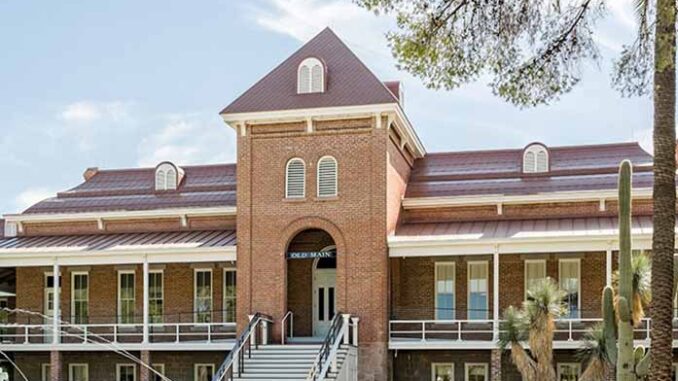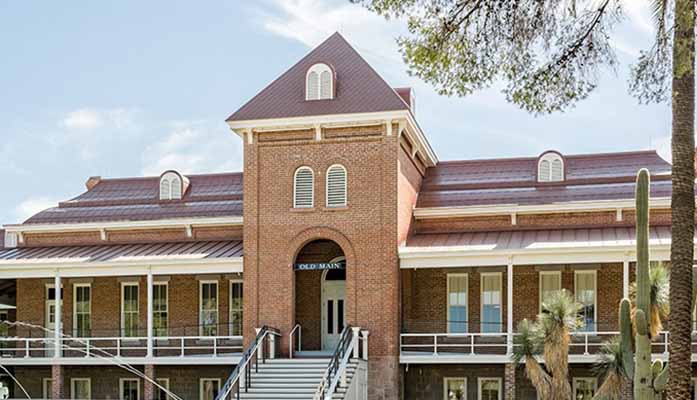
TUCSON – The new president of the University of Arizona (UA) has a vision for the university that is a ray of hope for Tucson—a vision of innovation, entrepreneurship, technology transfer, and business and industry spinoffs. It’s a vision he learned at Purdue.
Such a vision could transform Tucson from being an economic laggard of low wages and festering socioeconomic problems to being an economic powerhouse and a gem in the desert, one with better opportunities not only for talented UA graduates but also for the poor and disadvantaged—unless, that is, old thinking, old paradigms, old paternalism, old identity politics, and old language get in the way.
A story in the March 18 Arizona Daily Star revealed the huge hurdle facing Tucson and UA in replacing outdated ideas with new ones.
The story was about the first candidate for the open provost position at UA. As with the new university president, he is from Purdue and shares the president’s vision. In a public forum of faculty and staff, he mentioned the need for a focus on innovation, entrepreneurship and excellence. (Note: Years ago, a former UA provost was a client of my management consulting firm.)
Unfortunately, having come to understand UA’s culture and politics, the candidate had to play to the hidebound audience, thus dimming the ray of hope.
Pandering to the attendees, he recited shopworn buzzwords and platitudes about DEI, spoke about UA being a Hispanic-serving institution, fielded the inevitable questions about his commitment to “historically underrepresented groups,” and was asked how he will “protect, fund and foster cultural centers and affinity groups.”
He would’ve been instantly knocked out of the running if he had turned the questions around and asked, “What has the status quo of focusing on selected identity groups done for Tucson, and, specifically, for its high crime, high poverty, low K-12 test scores, low tax base, and brain-drain of talented young people who move elsewhere for opportunities? How has that helped the poor, the disadvantaged, and people of color?
Or he could’ve mentioned that even Harvard has come to the realization that dwelling on race and ethnicity has become stale, divisive and counterproductive. With its new policy of free tuition for students from families that have less than $200,000 in income, Harvard now recognizes the value of focusing on social class, which will have a similar effect on diversity as DEI initiatives but without such downsides as divisiveness, questionable legality, and the big bureaucracy required to label and track people as if they’re canned goods in a supermarket.
Candidates for the UA provost position can’t do much about the state designating UA as a Hispanic-serving institution, other than biting their tongue and not expressing the questions that the designation bring to mind, or at least to a mind with an IQ of over 100.
The most important question is this: What is a Hispanic? After all, if UA is going to serve Hispanics, it’s important to know who the target audience is.
I can’t answer the question, although I have lived in Southern Arizona for 35 years, formerly lived in the Mexican barrio of San Antonio for five years, and got two degrees from a university with a large population of Mexican nationals and Mexican Americans. My Mexican friends always referred to themselves as “Mexican,” not as “Hispanic.”
Is a Hispanic someone with roots in the Iberian Peninsula of Europe, that is, with roots in either Spain or Portugal? Is it someone whose ancestors were in the slave trade of the Spanish Empire, which brought more slaves to the Americas than did the English and Dutch? In the same vein, is a Hispanic a victimizer or a victim, an oppressor or an oppressed, a colonizer or a colonized?
Or is a Hispanic someone who has a Spanish-sounding surname? Well, that would exclude Mexico President Claudia Sheinbaum.
Maybe “Hispanic” is synonymous with “Latino” and refers to an individual who has ancestral roots in Latin America. If so, which country in Latin America, which ethnic group in Latin America, which race in Latin America, and which social class in Latin America?
Latin America is so diverse that the number of permutations and combinations seems infinite. To treat this diversity as homogeneous is insulting to the diverse peoples and counter to anthropology, ethnography, sociology, and history.
Are those subjects taught at UA? If so, you wouldn’t know it from the prevailing tropes about race and ethnicity on campus and the sophomoric questions asked by the faculty about identity groups.
My son earned two engineering degrees at UA, even though he has an Italian surname. Maybe he was admitted to UA under its Hispanic-serving mission. How could that be? Because there are tens of millions of people of Italian ancestry who live in Latin America, the result of the great diaspora of Italians to Latin America a century ago. That makes them Latin American, doesn’t it? And if “Latin American” is synonymous with “Hispanic,” doesn’t that also make them Hispanic?
If you find such questions irrelevant and a waste of time, you’re right. They wouldn’t be asked if were not for UA wasting resources and time by focusing on contrived racial and ethnic identities instead of excellence. Doing so will extinguish Tucson’s ray of hope, leave the city stuck in the past, and hurt the poor and disadvantaged.
Retired in Tucson, Mr. Cantoni was at the forefront of equal rights and equal opportunity over his career. Contact: craigcantoni@gmail.com.

